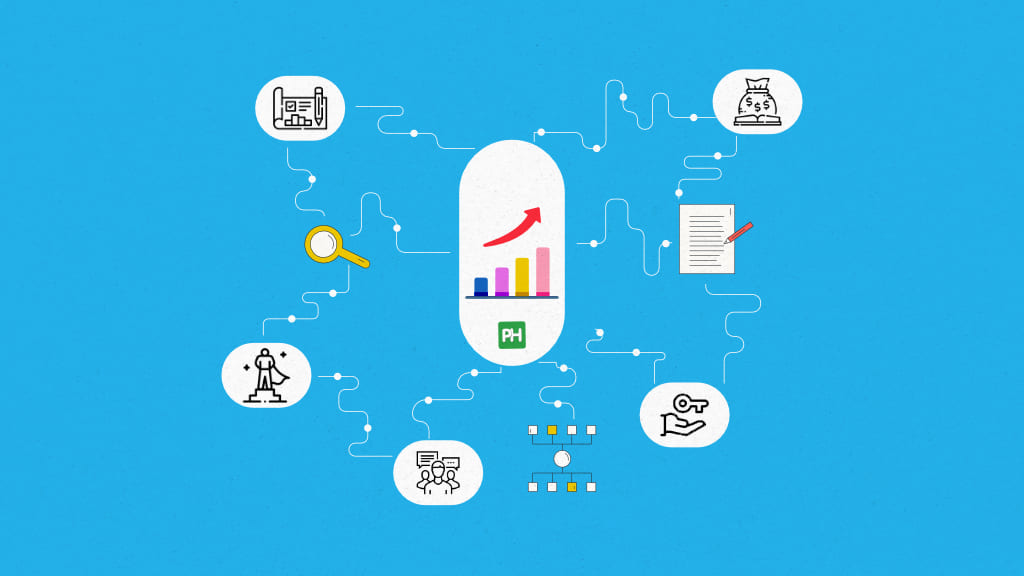Master SAFe For Architects and Improve Your Venture Style Skills
Master SAFe For Architects and Improve Your Venture Style Skills
Blog Article
SAFe Certification: Equipping Leaders in Scaled Agile Frameworks
The landscape of job monitoring is advancing, and SAFe Certification stands as a pivotal aspect for leaders seeking to apply the Scaled Agile Structure efficiently. This accreditation gears up experts with vital skills to cultivate cooperation and development within their teams, eventually enhancing organizational performance. The journey to ending up being an accredited SAFe leader includes even more than just obtaining understanding; it encompasses understanding the nuanced functions and duties within nimble settings. As we check out the complexities of SAFe Qualification, the effects for leadership performance and business success warrant much deeper evaluation.
Recognizing SAFe Certification
SAFe certification, which represents Scaled Agile Framework accreditation, is a credentialing program made to outfit specialists with the expertise and skills essential to implement agile methods at range within their organizations. The SAFe structure supplies a structured approach that helps organizations align their groups and manage bigger projects effectively, making sure that agile methods are applied consistently throughout numerous degrees.
The certification includes numerous roles, consisting of SAFe Agilist, SAFe Expert, and SAFe Program Professional, each concentrating on various facets of the structure. The program stresses the relevance of lean concepts, constant shipment, and partnership amongst teams, promoting a setting for technology and effectiveness.
Participants go through strenuous training that incorporates theoretical understanding with useful application, boosting their capability to lead active improvements. The educational program consists of topics such as dexterous groups, program implementation, and profile administration, making certain that certified specialists are skilled in all elements of the SAFe method.
Advantages of SAFe Certification
Acquiring a Secure qualification offers countless advantages for professionals looking to boost their jobs in nimble task monitoring. Most importantly, it gears up people with an extensive understanding of the Scaled Agile Structure, allowing them to properly implement dexterous principles throughout huge companies. This expertise is essential as organizations significantly adopt dexterous methods to boost productivity and versatility.
Additionally, SAFe qualification enhances a candidate's marketability and profession prospects. As organizations seek qualified professionals to lead their active improvements, licensed individuals can regulate greater wages and stick out in an affordable task market. Additionally, acquiring this certification shows a commitment to constant understanding and expert growth, which is highly concerned by employers. SAFe DevOps certification.
Networking chances additionally emerge from SAFe accreditation, connecting individuals with a neighborhood of like-minded specialists and sector leaders. This can result in partnership, mentorship, and understanding sharing, further improving one's professional experience.
Last but not least, licensed experts are often much better equipped to cultivate a culture of collaboration and innovation within their teams, driving successful results in dexterous projects. In general, the benefits of SAFe accreditation are manifold, making it an important financial investment for those in the active task monitoring domain name.
The Certification Refine
The trip to attaining SAFe qualification involves an organized process made to make sure candidates are well-prepared for dexterous management duties. This process usually starts with picking the proper SAFe qualification that lines up with one's profession ambitions and business needs, such as SAFe Agilist, SAFe Practitioner, or SAFe Program Expert.
Prospects are then encouraged to take part in a thorough training course, usually conducted by an accredited SAFe trainer - SAFe For Architects. These courses cover important concepts, concepts, and methods of the Scaled Agile Structure, giving individuals with valuable insights and functional expertise
Adhering to the training, candidates need to pass a certification exam to show their understanding and proficiency in using SAFe concepts. The exams are developed to evaluate not only expertise however likewise the ability to carry out agile practices properly within a scaled environment.
When certified, individuals access to a wide range of resources, consisting of area networks and ongoing learning opportunities, which better boost their active leadership abilities. Keeping accreditation needs continuous specialist advancement, guaranteeing that leaders remain existing with developing practices within the framework. Eventually, the accreditation process is a strenuous yet gratifying pathway for those intending to succeed in active leadership.
Obligations and functions
Effective execution of the Scaled Agile Structure (SAFe) depends greatly on clearly specified roles and duties within an organization. These functions are vital for guaranteeing positioning, performance, and effective collaboration throughout groups.
At the group degree, key duties consist of the Scrum Master, Product Proprietor, and Agile Team Members. The Scrum Master promotes the agile procedure, ensuring that the group abides by the SAFe principles while removing impediments. The Product Proprietor is accountable for maximizing the value of the product and taking care of the backlog to line up with organization purposes. Agile Group Members add their specialized skills to provide top notch increments.
At the program degree, the Release Train Designer (RTE) plays an essential duty in orchestrating the Agile Release Train (ART), guaranteeing smooth program execution and alignment across numerous teams. Additionally, the system architect and entrepreneur offer technical advice and tactical vision, respectively.
Continual Enhancement in SAFe
Constant renovation is a foundation of the Scaled Agile Framework (SAFe), driving organizations to improve their procedures, products, and total efficiency. By cultivating a culture of constant improvement, SAFe encourages groups to routinely evaluate their outcomes and process, recognize inadequacies, and execute techniques for enhancement. This iterative procedure not only improves efficiency yet likewise straightens groups with the organization's calculated purposes.
Central to this approach are the Inspect and Adapt (I&A) workshops, which offer structured possibilities for representation and discovering. During these sessions, teams examine performance metrics, talk about difficulties, and produce workable understandings to lead future versions. Furthermore, the use of Agile Release Trains (ARTs) helps with cross-functional partnership, allowing teams to share best techniques and drive collective enhancement.
Additionally, Lean-Agile management plays an important role in advertising a way of thinking of continuous enhancement. Leaders are tasked with cultivating a setting where testing is motivated, and failings are considered as discovering chances. By embedding continuous renovation into the organizational culture, SAFe encourages groups to stay active and responsive to altering market demands, eventually boosting their ability to deliver worth to consumers.

Conclusion
Finally, SAFe Accreditation functions as an important device for leaders aiming to implement dexterous methods efficiently within their companies. By promoting an extensive understanding of the Scaled Agile Framework, this certification improves development, collaboration, and task outcomes. In addition, it opens up methods for expert development and networking amongst industry professionals, guaranteeing that licensed experts remain skilled in browsing the intricacies these days's dynamic company landscape. Eventually, SAFe Certification adds considerably to business success and durability.
The landscape of job monitoring is developing, and SAFe Certification stands as a critical aspect for leaders looking for to execute the Scaled Agile Structure effectively.Getting a Risk-free qualification provides countless benefits for experts looking to improve their jobs in agile project administration. The Scrum Master promotes the active procedure, ensuring that the team adheres to the SAFe principles while removing impediments. By installing constant enhancement into the business society, SAFe encourages groups to continue to be receptive and nimble to altering market needs, inevitably boosting their capacity to supply worth to customers.

|
Master Agile Practices Through Comprehensive SAFe Certification
In a progressively intricate organization landscape, understanding Agile techniques via detailed SAFe certification has actually arised as a crucial proficiency for experts aiming to boost organizational performance. This qualification not only provides a deep understanding of the Secure framework but likewise cultivates vital skills for cultivating cooperation and alignment amongst teams. As organizations look for to navigate the difficulties of rapid adjustment, the implementation of Secure principles offers a pathway to improved results. Nonetheless, the journey to certification includes greater than simply theoretical expertise; it requires a calculated strategy to application that can considerably influence service agility. What does this involve?
Recognizing SAFe Framework

At its core, the Risk-free structure makes up four levels: Team, Program, Huge Option, and Profile. Each degree addresses particular facets of Nimble shipment, from managing little groups of designers to managing numerous programs and straightening critical initiatives with organization purposes.
SAFe encourages collaboration amongst cross-functional teams, promoting a setting where continual enhancement and advancement are vital. By highlighting placement, transparency, and integrated high quality, the structure gears up organizations to respond promptly to market modifications while supplying worth to consumers.
Additionally, SAFe sustains different methods, such as Scrum and Kanban, allowing organizations to customize their technique according to specific task needs. This flexibility ensures a durable structure for organizations intending to flourish in a swiftly progressing service landscape.
Benefits of SAFe Certification
Regularly demanded in the Agile community, Secure accreditation provides various benefits for organizations and professionals alike. Among the primary advantages is the improvement of abilities and understanding in carrying out the Scaled Agile Framework (Risk-free), which equips individuals investigate this site with the devices necessary to drive successful Agile improvements. This qualification signals a commitment to specialist advancement, making prospects a lot more competitive in the task market.
For companies, having certified professionals promotes a culture of constant improvement and collaboration, vital for adapting to altering market needs. It allows teams to straighten their deal with strategic goals, eventually boosting productivity and performance. Companies with a higher percentage of SAFe-certified staff members commonly experience decreased time-to-market and enhanced quality of deliverables.
Moreover, Risk-free certification assists in networking chances with various other Agile specialists, making it possible for the exchange of ideal experiences and methods (SAFe Agilist). This collective network can significantly add to business and individual development. In summary, obtaining Secure certification not just improves individual capabilities yet likewise enhances the overall Agile maturity of an organization, resulting in lasting success in today's vibrant company atmosphere
Secret Parts of SAFe
Structure on the benefits of Risk-free accreditation, recognizing the essential parts of the Scaled Agile Framework is crucial for efficiently applying its principles. The SAFe structure comprises 4 primary degrees: Team, Program, Big Option, and Profile. Each degree addresses various aspects of agile techniques, facilitating placement and shipment across the company.
At the Group level, cross-functional teams function collaboratively utilizing Nimble techniques, such as Scrum or Kanban, to supply step-by-step worth. The Program degree concentrates on the Agile Release Train (ART), which is a long-lived group of Agile teams that plans, dedicates, and executes together. The Large Remedy level addresses complicated remedies that call for multiple ARTs to function in show, guaranteeing sychronisation and assimilation.
Getting Ready For SAFe Accreditation
Preparing for SAFe qualification needs a strategic strategy to guarantee a detailed understanding of the structure. Initially, acquaint on your own with the core concepts and values of the Scaled Agile Framework (SAFe) Evaluation sources supplied on the Scaled Agile internet site, consisting of the SAFe structure documentation, study, and whitepapers, to develop a solid structure.
Following, take into consideration enlisting in a main Secure training course. These courses, led by certified SAFe Program Professionals (SPCs), deal structured finding out experiences that cover useful applications and important concepts. Engaging with peers and trainers can improve your grasp of the material.
Additionally, exercise with example test inquiries to acquaint yourself with the style and kinds of questions you might run into. Joining study hall or online forums can facilitate knowledge exchange and provide assistance from fellow prospects.
Using SAFe in Organizations
Implementing the Scaled Agile Structure (Risk-free) within companies necessitates an organized technique that aligns groups and processes towards an usual objective. The successful application of SAFe begins with developing a clear understanding of its principles, consisting of partnership, openness, and positioning. Organizations has to initially analyze their current processes and identify areas for enhancement, ensuring they are prepared for the cultural shift that SAFe involves.
Training and accreditation for groups aid gear up members with the needed skills and understanding to operate effectively within the SAFe structure. This consists of developing Agile Launch Trains (ARTs), which serve as the backbone for delivering worth throughout the company.
By constantly using Secure concepts and techniques, organizations can achieve higher dexterity, enhance partnership, and inevitably drive better business outcomes. Welcoming this framework settings companies to respond swiftly to market changes and customer needs (SAFe For Architects).

Verdict
Finally, grasping Active techniques through thorough Secure certification significantly contributes and enhances expert capabilities to organizational performance. The expertise obtained from comprehending the Risk-free structure, in addition to its vital components, enhances and promotes successful improvements partnership amongst teams. Getting this qualification positions individuals positively in a competitive work market, underscoring the importance of constant improvement and positioning within companies. Accepting Risk-free inevitably brings about raised effectiveness and greater quality deliverables.
The SAFe (Scaled Agile Framework) framework offers as a structured technique for executing Active methods at range throughout big organizations. One of the key advantages is the improvement of skills and expertise in applying the Scaled Agile Framework (SAFe), which equips individuals with the devices needed to drive successful Agile changes. In summary, obtaining SAFe certification not just enhances individual capacities but likewise reinforces the general Agile maturity of a company, leading to lasting success in today's vibrant company atmosphere.
Building on the advantages of Secure qualification, understanding the vital elements of the Scaled Agile Framework is crucial for successfully executing its concepts.Implementing the Scaled Agile Framework (SAFe) within companies necessitates an organized approach that straightens groups and procedures toward a typical goal.
|
Advancement Your Profession With SAFE Certification: Agile Knowledge Unlocked
In today's quickly progressing business landscape, obtaining Secure qualification can significantly boost your career trajectory by outfitting you with important nimble competence. This certification not only functions as a testimony to your proficiency in nimble approaches however additionally positions you as a driver for business modification. As business significantly look for experts who can lead dexterous changes, understanding the paths to acquire this certification becomes important. Nonetheless, the actual question hinges on exactly how this credential can uniquely impact your career and open unanticipated doors in the active domain.
Understanding SAFe Accreditation
SAFe Certification acts as a critical certification for experts seeking to enhance their careers in agile task management. Developed by Scaled Agile, Inc., the Scaled Agile Structure (Secure) provides an extensive strategy to implementing dexterous methods throughout large companies, making it necessary for experts aiming to browse complex project settings successfully.
The accreditation process incorporates different levels, consisting of Risk-free Agilist, SAFe Practitioner, and SAFe Program Professional, each targeting different duties within check active teams. These qualifications are created to gear up specialists with the understanding and tools essential to lead active transformations, foster partnership throughout teams, and improve task delivery end results.
Comprehending Secure Qualification entails identifying its focus on aligning approach with execution, advertising a culture of continual improvement, and leveraging dexterous principles at range. This framework not only boosts individual proficiencies but likewise adds to organizational dexterity, enabling services to respond quickly to market adjustments and customer needs.
Achieving SAFe Qualification symbolizes a commitment to expert development and a strong foundation in active methodologies, placing people as useful assets in their companies. By embracing this accreditation, specialists can improve their capability, guaranteeing they stay competitive in a rapidly evolving work market.
Advantages of SAFe Certification
Obtaining Risk-free Qualification supplies numerous benefits for professionals in the dexterous project monitoring arena. This qualification not only boosts private qualifications but additionally shows a dedication to mastering the Scaled Agile Structure, which is increasingly recognized by employers. With a Secure accreditation, specialists can verify their knowledge and abilities in active methods, making them extra affordable in the work market.
Among the vital advantages is the capacity to lead dexterous transformations within organizations. Certified people are furnished with the tools and methods necessary to carry out and scale dexterous practices properly, driving effectiveness and performance. Moreover, companies with SAFe-trained specialists often experience enhanced positioning across groups, promoting much better cooperation and development.
In Addition, Secure Qualification opens up doors to networking opportunities within the active area. Professionals can get in touch with like-minded people, share best practices, and stay updated on sector fads. The certification also offers access to exclusive sources, including workshops and webinars, which can better improve one's knowledge.
Ultimately, getting Risk-free Qualification encourages specialists to progress their careers, add meaningfully to their organizations, and lead the cost in agile quality. SAFe For Architects.
Pathways to Get Accreditation

To begin, candidates generally involve in a SAFe training course, which serves as the foundational action for certification. These training courses are promoted by SAFe Program Professionals (SPCs) and cover vital concepts, practices, and functions within the Secure structure. After completing the training, candidates need to pass an accreditation test to verify their knowledge and skills.
There are several certifications readily available, such as SAFe Agilist (SA), Risk-free Specialist (SP), and Risk-free Scrum Master (SSM), amongst others. Each certification needs details training sessions and examinations, allowing experts to pick a path that aligns with their profession objectives.
Moreover, preserving Risk-free accreditation demands recurring education and learning and renewal, making certain that experts remain existing with evolving Agile practices. By purposefully selecting the proper training and certification paths, individuals can significantly enhance their competence and occupation trajectory within the Agile landscape.
Real-World Applications of SAFe
Applying the SAFe framework in organizations has shown to be extremely effective in enhancing productivity and alignment across teams. This methodology facilitates cooperation among numerous divisions, enabling groups to work in the direction of an unified collection of objectives. By damaging down silos and promoting communication, SAFe enables organizations to react quickly to market modifications and consumer demands.

Additionally, SAFe is important in boosting task exposure through metrics and reporting devices, enabling stakeholders to make informed choices. It likewise encourages a society of constant enhancement, advertising normal retrospectives and adjustment of methods. Ultimately, the real-world applications of Secure demonstrate its versatility and performance in driving successful end results across various industries, making it an essential framework for contemporary companies.
Career Advancement Opportunities
The adoption of the Risk-free framework not just enhances business performance however also opens significant profession advancement chances for professionals within the Agile and job management areas. As organizations increasingly accept Agile methods, the need for SAFe-certified experts remains to rise, developing a competitive edge for those geared up with this qualification.
SAFe accreditation offers experts accessibility to a range of roles, consisting of Agile Release Train (ART) roles, Scrum Masters, and Launch Train Engineers. Moreover, people can transition right into management placements such as Program Managers or Portfolio Managers, thereby boosting their responsibilities and influence within the organization. The certification likewise shows a commitment to constant knowing and adaptability, qualities highly valued by companies.
In addition, experts with SAFe accreditation frequently appreciate greater making capacity. Sector records suggest that certified people generally command wages that go beyond those of their non-certified find more peers. Additionally, the networking chances afforded by Secure areas can lead to valuable connections and profession prospects. Leading SAFe.
Final Thought
Finally, acquiring SAFe certification substantially improves expert credentials in the realm of dexterous methodologies. This certification not just helps with mastery of agile techniques yet likewise advertises chances for occupation innovation throughout different functions, including Scrum Masters and Program Supervisors. By outfitting individuals with necessary abilities and expertise, Risk-free accreditation fosters management capacities required for driving effective active transformations within companies, eventually adding to better earning capacity and important connections within the agile area.
Getting SAFe Accreditation offers various advantages for professionals in the active job management arena. With a Risk-free certification, professionals can validate their knowledge and skills in active methods, making them extra competitive in the work market.
These programs are assisted in by SAFe Program Specialists (SPCs) and cover essential concepts, methods, and duties within the SAFe structure.In final thought, obtaining Risk-free qualification dramatically enhances expert qualifications in the realm of agile methods. By equipping individuals with important skills and understanding, Risk-free certification promotes management capabilities required for driving effective dexterous changes within companies, inevitably contributing to greater earning potential and important connections within the agile community.
} Report this page